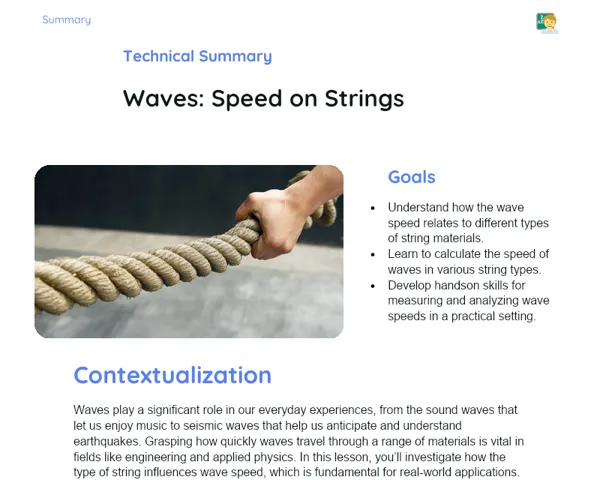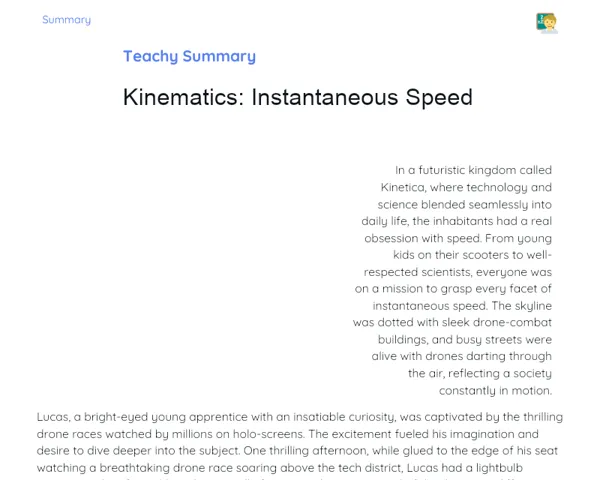Summary Tradisional | Thermodynamics: Gas Pressure
Contextualization
Thermodynamics is a key branch of physics that delves into the relationships between heat, work, and energy in physical systems. A cornerstone of this discipline is pressure, which is essential in understanding various natural and technological occurrences. Pressure is defined as the force applied perpendicular to a surface, divided by the area of that surface. In the realm of thermodynamics, grasping how pressure functions is crucial for analysing and predicting the behaviour of gases under varying conditions.
Gas pressure has a wide array of practical applications, from powering internal combustion engines to operating refrigerators and aircraft. For instance, in car engines, understanding pressure is vital for enhancing performance and efficiency. Likewise, in aviation, atmospheric pressure significantly impacts flight and overall stability. Thus, studying gas pressure equips us with theoretical insights that hold practical value across different fields of science and engineering.
To Remember!
Concept of Pressure
Pressure is a physical quantity that describes the force exerted perpendicular to a surface divided by the area of that surface. The fundamental formula for calculating pressure is P = F/A, where P represents pressure, F is the normal force applied, and A is the area over which the force is distributed. Pressure gives us an idea of the intensity of that force over a specified area.
In the International System (SI), the unit for pressure is the Pascal (Pa), which corresponds to one Newton per square metre (N/m²). Other common units include atmosphere (atm), millimetre of mercury (mmHg), and bar. Pressure is a critical concept in diverse areas of physics and engineering, notably in thermodynamics, which is vital for grasping gas behaviour in various conditions.
A solid understanding of pressure is essential for analysing natural and technological phenomena such as atmospheric pressure, and pressure in fluids and gases, as well as their applications in engines, aircraft, and refrigerators. Precision in pressure calculations is crucial for the effective operation and safety of these systems.
-
Pressure is the force applied perpendicular to a surface divided by the area of that surface.
-
The basics of pressure are covered in the formula P = F/A.
-
Key units of measure include Pascal (Pa), atmosphere (atm), millimetre of mercury (mmHg), and bar.
Units of Measurement for Pressure
The units used to measure pressure differ based on their context and application. Within the International System (SI), the standard unit is the Pascal (Pa), representing the pressure of one Newton per square metre (N/m²). The Pascal is frequently utilised in scientific and academic computations due to its relevance in SI standards.
Atmosphere (atm) is another commonly used unit, particularly regarding atmospheric pressure, where one atmosphere is roughly equal to 101325 Pa. The millimetre of mercury (mmHg) is often used in medical contexts, especially for blood pressure measurements, equating to about 133.322 Pa. Additionally, the bar is a practical unit of measure employed across various industries, where 1 bar is equivalent to 100000 Pa.
Grasping how to convert between these units is vital for precision in calculations and measurements across different contexts. For example, understanding the relationship that 1 atm = 101325 Pa is crucial in scenarios requiring pressure specifications in various units, given specific norms or standards in the field.
-
The standard unit of measure in the SI for pressure is Pascal (Pa).
-
Atmosphere (atm) is often employed for measuring atmospheric pressure.
-
Millimetre of mercury (mmHg) is commonly used in medical settings.
-
Bar is a versatile unit used in a range of industries.
Calculating Pressure in Gases
To determine the pressure of an ideal gas, we employ the ideal gas law: P = nRT/V. In this equation, P signifies pressure, n represents the number of moles of gas, R is the universal gas constant, T is the temperature in Kelvin, and V is the volume of the gas container. This formula allows the calculation of gas pressure when the other relevant variables are known.
The universal gas constant (R) has an approximate value of 8.31 J/(mol·K). It’s essential to convert temperature to the Kelvin scale for accurate computations. This equation is foundational for understanding gas behaviour across various temperature, volume, and substance amount conditions.
Applying this formula to practical situations, such as measuring the pressure in a balloon or a car tyre, reinforces theoretical understanding and illustrates the concept’s practical significance. Accuracy in these calculations is vital to ensure safety and efficiency in technological applications involving gases.
-
The formula for calculating the pressure of an ideal gas is P = nRT/V.
-
R, the universal gas constant, is roughly 8.31 J/(mol·K).
-
Be sure to convert temperature to Kelvin for precise calculations.
Applications of Pressure
Gas pressure finds multiple practical applications within various scientific and engineering fields. In internal combustion engines, like those used in cars, comprehending pressure is key to enhancing performance and efficiency. The gas pressure within the cylinders directly affects the power output and fuel efficiency.
For refrigerators, pressure regulates the refrigeration cycle, allowing heat transfer and maintaining cold temperatures. The refrigerant pressure is adjusted to facilitate evaporation and condensation at different points in the system, thereby assisting in heat exchange and cooling down the fridge’s interior.
In the aviation sector, atmospheric pressure is critical for flight and stability. External pressure decreases with altitude, thereby influencing wing lift and engine function. Maintaining cabin pressurisation is necessary to ensure comfortable and safe conditions for passengers and crew at high altitudes.
-
In internal combustion engines, pressure is essential for optimal efficiency and performance.
-
Refrigerants use pressure regulation to control the refrigeration cycle.
-
Atmospheric pressure considerably influences lift and engine operation in aviation.
Key Terms
-
Pressure: The force applied perpendicular to a surface divided by that surface's area.
-
Pascal (Pa): The standard SI unit for pressure, equivalent to one Newton per square metre (N/m²).
-
Atmosphere (atm): A measurement unit for atmospheric pressure, approximately equal to 101325 Pa.
-
Millimetre of mercury (mmHg): A pressure unit frequently used in medical contexts, equivalent to about 133.322 Pa.
-
Bar: A practical pressure measurement unit, where 1 bar equals 100000 Pa.
-
Ideal gas law: Formula P = nRT/V, used to compute the pressure of an ideal gas.
-
Universal gas constant (R): Approximately 8.31 J/(mol·K), utilised in the ideal gas law.
-
Temperature in Kelvin: An absolute temperature scale necessary for accurate calculations in thermodynamics.
-
Internal combustion engines: Engines that convert pressure from fuel combustion into motion.
-
Refrigerators: Appliances that utilise pressure cycles to exchange heat and maintain cool temperatures.
-
Atmospheric pressure: The pressure exerted by the atmosphere on the Earth's surface, crucial for aviation.
Important Conclusions
A solid understanding of gas pressure is fundamental to thermodynamics and its myriad practical applications. Pressure, defined as the force exerted perpendicular to a surface divided by its area, is measured in units like Pascal (Pa), atmosphere (atm), millimetre of mercury (mmHg), and bar. Familiarity with these units and the ability to convert between them is essential for precision in calculations and measurements.
The ideal gas law, expressed as P = nRT/V, allows us to calculate gas pressure when variables such as the number of moles, the universal gas constant, the temperature in Kelvin, and the volume of the container are known. This formula is vital for comprehending gas behaviour under varying conditions and finds utility in practical scenarios like balloons, car tyres, and gas cylinders.
Beyond theoretical considerations, gas pressure plays a significant role in practical applications across internal combustion engines, refrigeration, and aviation. Understanding how pressure impacts engine performance, the refrigeration cycle, and aircraft stability is crucial for technological advancement and operational safety. Thus, delving into gas pressure not only enriches learners' theoretical knowledge but also gears them towards tackling practical challenges in diverse science and engineering domains.
Study Tips
-
Consistently revisit the concepts of pressure and relevant formulas, such as P = F/A and P = nRT/V, to reinforce understanding.
-
Engage in practical exercises to practice converting between different pressure measurement units (Pa, atm, mmHg, bar).
-
Investigate everyday applications of pressure concepts, like checking car tyre pressure or understanding how a fridge operates.


